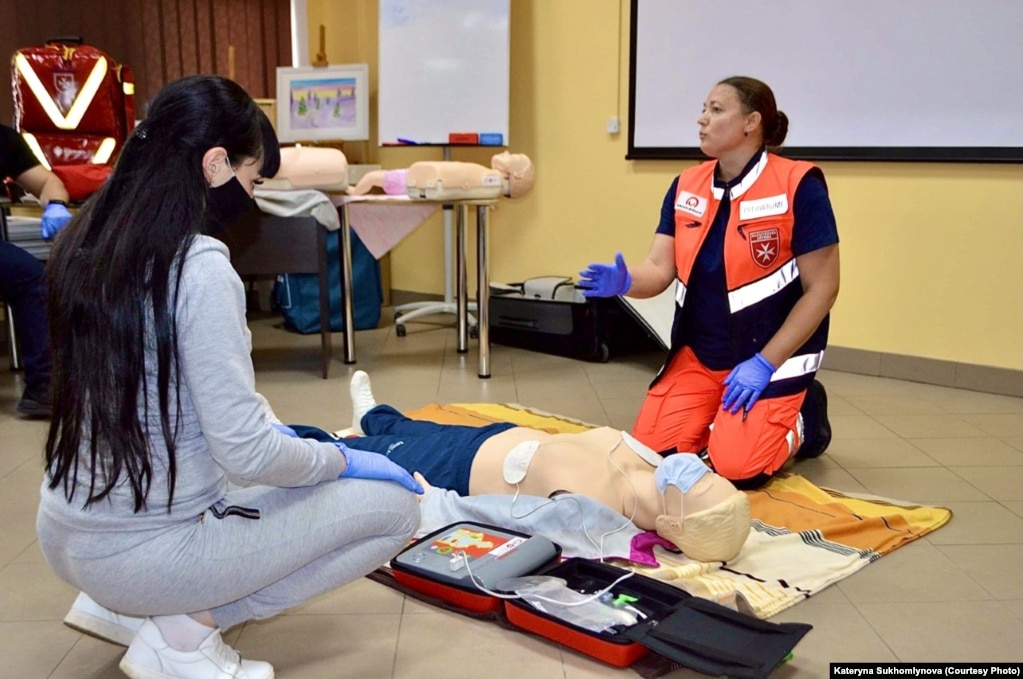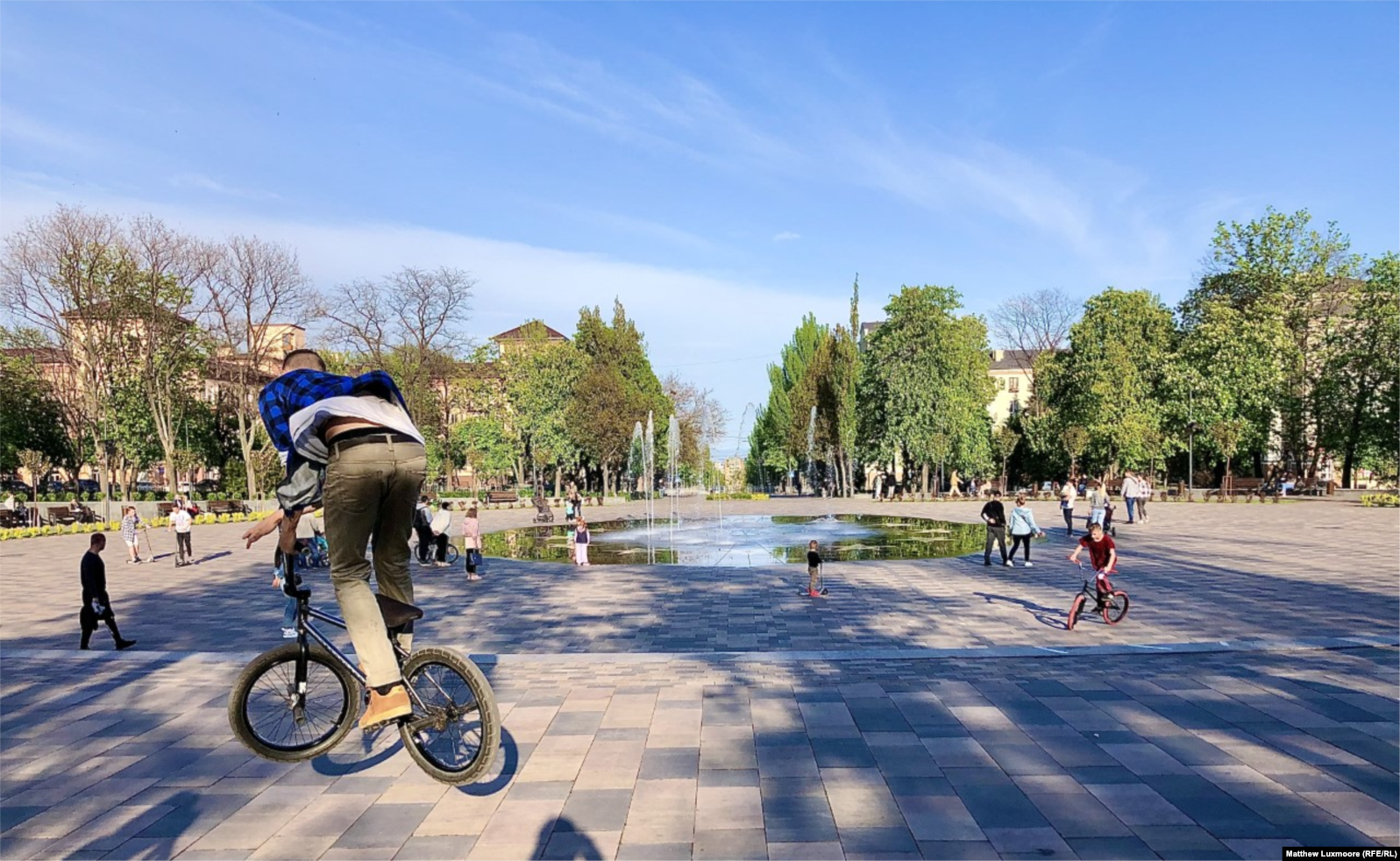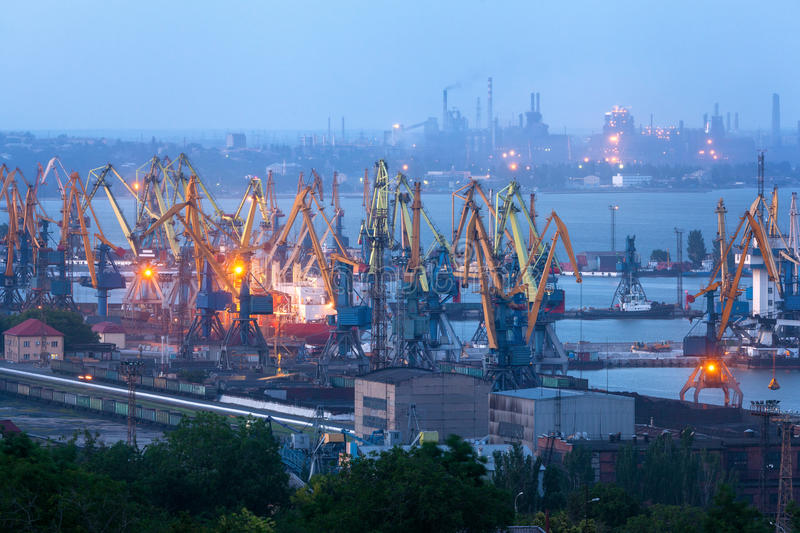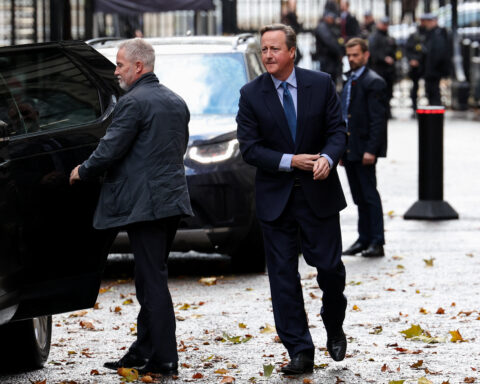MARIUPOL, Ukraine — An eight-hour crash course conducted exclusively in Ukrainian teaches them methods to staunch blood flow, deal with shrapnel wounds, and administer emergency assistance to heart-attack victims. The participants — yoga teachers, gym trainers, lawyers, policemen — come from various walks of life.
“We don’t want war,” Kateryna Sukhomlynova, the 42-year-old instructor and longtime volunteer for the Ukrainian armed forces, said during a coffee break between classes last week. “But we want to be ready if war comes.”

The prospect of an invasion, unimaginable for most Europeans, has for the past seven years hung like a specter over this industrial port city located just 100 kilometers from Russian territory.
Amid increasingly strained ties between and the West, a massive buildup of Russian troops along the border last month fueled fears of a military offensive, as well as speculation that the Kremlin was simply sending a signal of strength to Kyiv and its backers in the new administration of U.S. President Joe Biden.
Russia, which said the troops had gathered for military exercises, announced in late April that many units participating in the maneuvers had been ordered to return to their permanent bases. However, Defense Minister Sergei Shoigu said troops would remain “in a state of readiness for an immediate response” in connection with perceived threats from long-scheduled NATO exercises in Eastern Europe.
But in Mariupol, a city well used to rumors of invasions and war, many seem inured to headlines announcing new negotiations or prophesying a fresh escalation. “Everyone’s just tired,” says Pavel Kovbasenko, a 23-year-old who works at the blast furnace plant of Azovstal, one of two steel factories that power the city’s economy.

That’s because the tension has rarely subsided since separatists in nearby Donetsk, capital of the surrounding Donetsk region of which Mariupol is the second-largest city, took up arms in April 2014, with Moscow’s backing. Mariupol found itself in deadly proximity to a conflict that rapidly spiraled out of control in large areas of the Donetsk and neighboring Luhansk regions, and prompted concerns that Russia might seize swathes of Ukraine’s southeast to gain control of the Azov Sea and land access to the Crimean Peninsula it seized from Ukraine that March.
A shaky cease-fire declared in September 2014 raised hopes of an end to the fighting. Then, in early 2015, a massive salvo of Soviet-made Grad rockets rained down on Mariupol’s eastern district killing 27 people, wounding 97 others, and decimating a crowded open-air market. Ukraine accused the separatists of launching the attack with weapons supplied from Russia; the Kremlin has denied any involvement in a war that has now claimed some 14,000 lives and uprooted millions more.

The feared invasion of Mariupol never came to pass, and on the surface, the artillery strike seems a distant memory. The end of Ukraine’s long coronavirus lockdown in early May brought crowds to the city’s newly redesigned park and packed its bars and cafes with patrons. There are the usual gripes over corruption, stagnant wages, and the slow pace of reform since the Maidan revolution overthrew the pro-Russia government of President Viktor Yanukovych in 2014. But talk of Russia’s latest saber-rattling was nothing new.
“We’ve heard it all many times. We’re used to it,” Diana Berg, a graphic designer who left her native Donetsk when fighting erupted in April 2014, said in an interview outside a cafe overlooking Mariupol’s bustling Prospekt Mira (Peace Avenue). “Yes, it’s quiet now, but we know that can change at any moment. Everyone here has a suitcase packed.”
Away from the city center in Mariupol’s eastern district, however, the muffled sounds of explosions can often be heard in the evenings, a deadly orchestra that resumes once international monitoring teams have left frontline towns.
In Shyrokyne, an abandoned former resort east of Mariupol that sits just a kilometer from the front line, Ukrainian Army volunteer Oleh Horbenko operates a fleet of drones that surveil enemy positions. He analyses the data on a large screen in his makeshift office in a house vacated by fleeing civilians in 2015.

An ex-soldier who retired in 2016 because he had passed the age limit for active duty officers, the 60-year-old Horbenko believes Russia’s recent troop buildup was aimed at facilitating a vast transfer of military equipment near insurgent positions.
“They may have withdrawn the troops, but the equipment remained,” he said, echoing an assessment backed by some Western analysts.
Horbenko’s wife and two sons, aged 17 and 21, live in Dnipro, a city four hours’ drive north that he visits during lulls in fighting. He used to take orders from Moscow while fighting for the Soviet Union in Afghanistan; now he fights on the side of an independent Ukraine, against an enemy that Moscow backs. A Russian-speaker like most residents of Mariupol, he disapproves of Ukrainian nationalism. But he believes harsh Western sanctions against Russia are the only way to end the violence.
“You can’t win this war by military means. Russia understands that a full-scale assault on Ukraine will be a Pyrrhic victory,” he says.

Horbenko’s 80-year-old mother, who lives in Russia, used to visit each summer and stay in his dacha outside Dnipro. But her support for Russian President Vladimir Putin, whom many Ukrainians hold ultimately responsible for the war, means mother and son avoid discussing politics. She has not visited since 2014.
“She tells me, ‘When you finally stop your war and retire to the dacha, I’ll come to see you,'” he says. “I always respond, ‘OK, maybe when you get rid of Putin.'”

Berg, the graphic designer, fled Donetsk in May 2014 after a pro-Ukrainian rally she organized was attacked by pro-Russian thugs. She traveled to the Black Sea port of Odesa, expecting to return home after a week. Instead, she ended up spending months at a time at several Ukrainian cities before finally settling in Mariupol — a place she chose so that she can be among the first people to return to a Ukrainian-controlled Donetsk.
But if that happens in her lifetime — and Berg is not convinced it will — she warns that the task of rebuilding and assimilating Donetsk, Luhansk, and other parts of separatist-held eastern Ukraine may be an insurmountable challenge.
“Everyone talks about the war. No one considers what will happen after,” she says, noting that residents of separatist areas have spent years living in a pro-Russian information space. “Once the fighting ends, and the political talks begin, those people will have to be integrated. And that’s when the real shit show will begin.”





